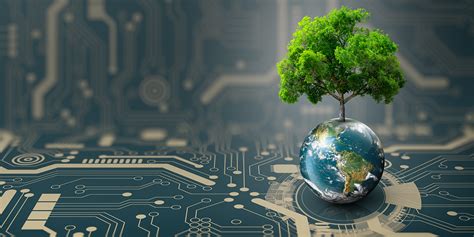As the world grapples with the challenges of climate change, environmental degradation, and waste management, the need for sustainable solutions has become more pressing than ever. One of the most significant contributors to these problems is the rapid growth of electronic waste, or e-waste, which is generated by the disposal of electronic devices such as computers, smartphones, and televisions. The United Nations estimates that the world generated over 50 million metric tons of e-waste in 2018, with this number expected to double by 2050.
In response to this crisis, green tech recycling solutions have emerged as a vital component of a sustainable future. These solutions involve the responsible collection, processing, and recycling of e-waste, with the goal of minimizing its environmental impact and promoting a circular economy.

The Benefits of Green Tech Recycling
Green tech recycling solutions offer a range of benefits for the environment, the economy, and society as a whole. Some of the most significant advantages include:
- Conservation of Natural Resources: By recycling e-waste, we can recover valuable materials such as copper, gold, and silver, reducing the need for primary production and the associated environmental impacts.
- Reduction of Greenhouse Gas Emissions: Recycling e-waste requires significantly less energy than producing new materials from raw resources, resulting in a reduction of greenhouse gas emissions and a lower carbon footprint.
- Job Creation and Economic Growth: The e-waste recycling industry has the potential to create thousands of jobs and stimulate local economies, particularly in developing countries.
- Protection of Human Health: Improper disposal of e-waste can lead to the release of toxic chemicals, which can contaminate soil, water, and air, and pose serious health risks to humans and wildlife. Green tech recycling solutions can mitigate these risks.
How Green Tech Recycling Works
Green tech recycling solutions typically involve a series of steps, including:
- Collection: E-waste is collected from households, businesses, and community recycling centers.
- Sorting: Collected e-waste is sorted based on its composition and type.
- Dismantling: Electronic devices are dismantled to recover valuable components and materials.
- Shredding: Components and materials are shredded into smaller pieces to facilitate further processing.
- Separation: Shredded materials are separated into different fractions, such as metals, plastics, and glass.
- Recycling: Separated materials are recycled into raw materials, which can be used to manufacture new products.
Challenges and Opportunities in Green Tech Recycling
Despite the many benefits of green tech recycling, there are several challenges and opportunities that need to be addressed:
- Lack of Infrastructure: Many countries lack the necessary infrastructure to support e-waste recycling, including collection systems, processing facilities, and trained personnel.
- Technological Limitations: Current recycling technologies are not always able to recover all materials from e-waste, resulting in a loss of valuable resources.
- Economic Constraints: E-waste recycling can be a costly process, making it challenging for companies to operate profitably.
- Regulatory Frameworks: Weak or non-existent regulations can hinder the development of e-waste recycling industries.

Innovative Solutions in Green Tech Recycling
Several innovative solutions are being developed to address the challenges and opportunities in green tech recycling, including:
- Advanced Recycling Technologies: New recycling technologies, such as robotic sorting and advanced chemical processing, are being developed to improve the efficiency and effectiveness of e-waste recycling.
- Closed-Loop Recycling: Closed-loop recycling systems aim to recover all materials from e-waste, reducing waste and the continuous demand for primary resources.
- Design for Recycling: Product designers are working to create electronic devices that are easier to recycle, using design principles such as simplicity, standardization, and recyclability.
Conclusion
Green tech recycling solutions are critical for reducing the environmental impacts of e-waste and promoting a sustainable future. While there are challenges and opportunities that need to be addressed, innovative solutions are being developed to improve the efficiency and effectiveness of e-waste recycling. As consumers, businesses, and governments, we must work together to support the growth of the e-waste recycling industry and promote a circular economy.
Join the Conversation
Share your thoughts on green tech recycling solutions and how we can work together to promote a sustainable future.






What is green tech recycling?
+Green tech recycling refers to the responsible collection, processing, and recycling of electronic waste (e-waste) to minimize its environmental impact and promote a circular economy.
Why is green tech recycling important?
+Green tech recycling is important because it helps to conserve natural resources, reduce greenhouse gas emissions, and protect human health and the environment from the impacts of e-waste.
How can I participate in green tech recycling?
+You can participate in green tech recycling by recycling your electronic devices, purchasing products made from recycled materials, and supporting companies that prioritize sustainability and recycling.
